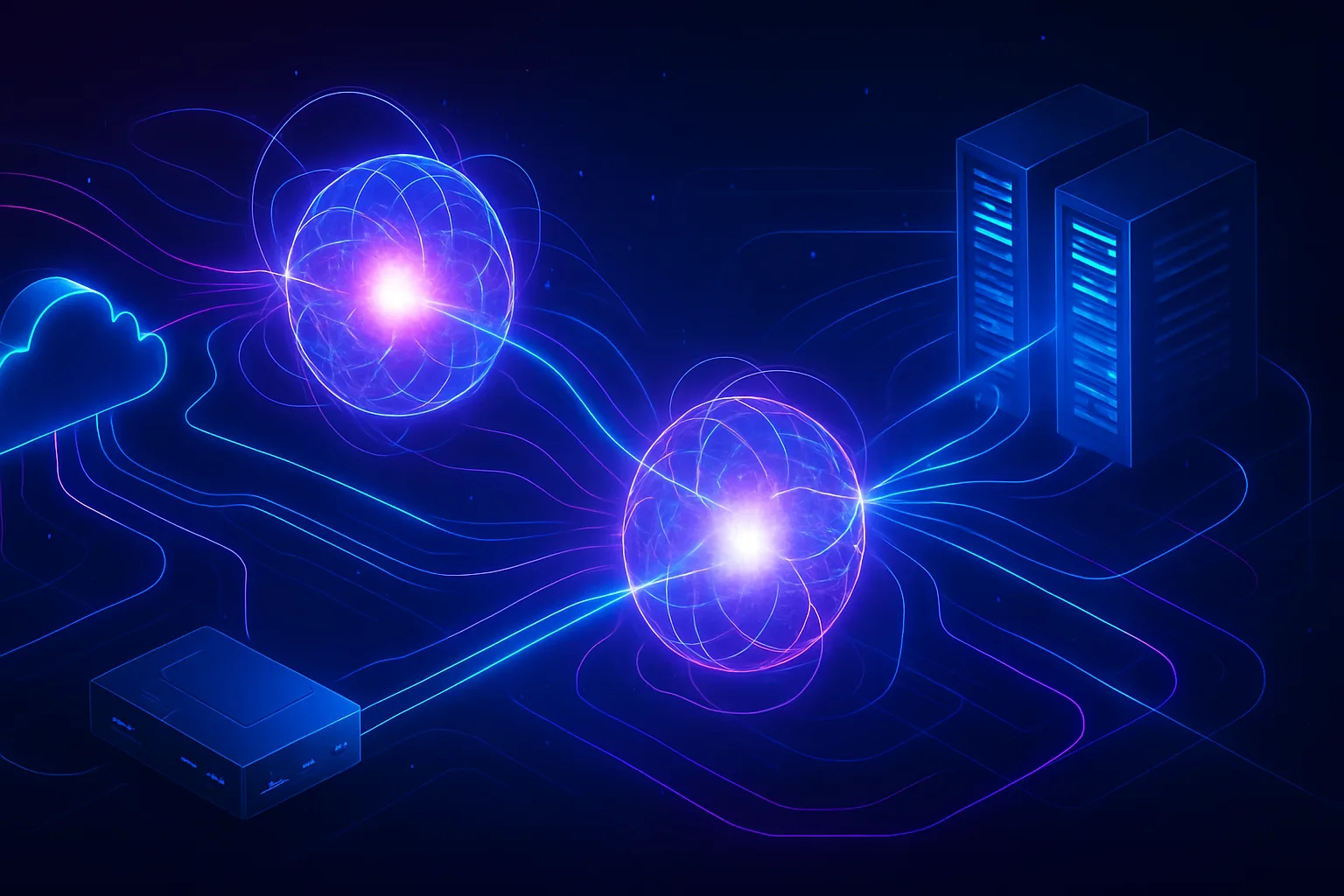The internet as we know it is built on classical physics and conventional networking technologies. But with the rise of quantum computing, traditional encryption and communication methods face unprecedented risks. This has led to the development of quantum networking, a revolutionary approach that leverages the principles of quantum mechanics to create ultra-secure, next-generation communication systems.
In this guide, we’ll explore:
- What quantum networking is
- How it works
- Key technologies behind it
- Applications and benefits
- Challenges and future outlook
What Is Quantum Networking?
Quantum networking refers to the use of quantum entanglement and quantum states of particles (such as photons) to transmit information across a network. Unlike classical data transfer, quantum networks rely on principles like:
- Superposition – A quantum bit (qubit) can exist in multiple states simultaneously.
- Entanglement – Two particles share an instantaneous connection, no matter the distance.
- No-cloning theorem – Quantum data cannot be copied, making interception nearly impossible.
This means quantum networks can provide unbreakable security and new ways of transmitting data beyond classical limits.
How Quantum Networking Works
Quantum networking is built around quantum communication channels that transmit quantum bits. These qubits are typically carried by photons traveling through:
- Optical fibers – For short to medium-distance quantum communication.
- Free space (satellites) – For long-distance communication between continents.
The most important mechanism is Quantum Key Distribution (QKD), which uses qubits to establish encryption keys. If an attacker tries to intercept the key, the quantum state collapses, alerting both parties.
Key Technologies in Quantum Networking
- Quantum Key Distribution (QKD)
Ensures encryption keys are securely exchanged using quantum principles. - Quantum Repeaters
Extend the distance of quantum communication by overcoming photon loss. - Entanglement Swapping
Allows the creation of large-scale quantum networks by linking entangled particles over long distances. - Quantum Memories
Devices that store qubits for synchronization and reliable data transfer.
Applications of Quantum Networking
- Ultra-Secure Communication
Governments, banks, and military operations can use QKD for tamper-proof data exchange. - Quantum Internet
A global quantum network enabling instantaneous, secure communication across the world. - Cloud Computing Security
Protecting sensitive workloads from quantum attacks. - Scientific Collaboration
Researchers can share data securely and run distributed quantum experiments.
Benefits of Quantum Networking
✅ Unbreakable Encryption – Resistant to both classical and quantum attacks.
✅ Future-Proof Security – Prepares networks for the age of quantum computers.
✅ Scientific Innovation – Enables experiments not possible with classical communication.
✅ Reduced Risk of Data Breaches – Makes eavesdropping detectable in real time.
Challenges of Quantum Networking
⚠️ Scalability – Quantum repeaters and infrastructure are still experimental.
⚠️ Cost – Building quantum networks is expensive and requires new hardware.
⚠️ Fragile Technology – Quantum states are easily disrupted by noise.
⚠️ Global Standards – Lack of unified protocols for quantum internet deployment.
The Future of Quantum Networking
Quantum networking is still in its early stages, but global research initiatives are accelerating progress. In the coming years, we can expect:
- Pilot quantum internet backbones between major cities.
- Integration of quantum encryption into critical infrastructure.
- Hybrid models combining classical and quantum networks.
The long-term vision is a worldwide quantum internet, providing instant, secure communication and powering the next wave of digital transformation.
Conclusion
Quantum networking represents a paradigm shift in how we think about communication and cybersecurity. By leveraging the strange but powerful principles of quantum mechanics, it offers a future where data security is mathematically guaranteed and global communication reaches unprecedented levels of reliability.
For sysadmins, network engineers, and IT leaders, now is the time to start understanding quantum networking—because the internet of the future will be quantum-powered.


